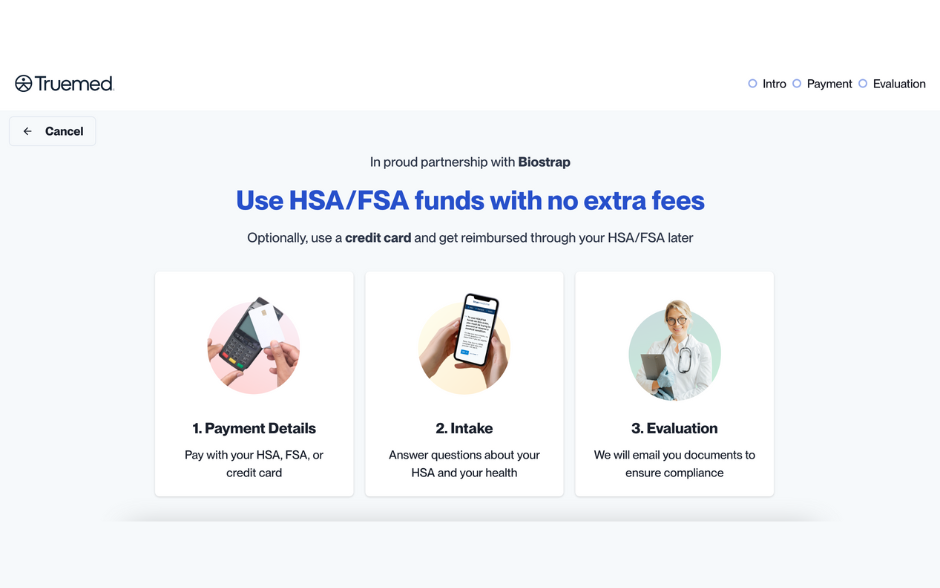Intermittent fasting (IF) is a popular meal plan among health-conscious individuals and athletes alike. Characterized by long stretches of time without eating (followers typically fast for the entire morning and eat at noon), intermittent fasting has been shown to promote weight loss, boost energy, and elevate recovery.
If you’re interested in fasting, you might also be wondering where an exercise regimen fits into the picture. Working out without eating first is called fasted cardio, and it can serve as an additional support in the path to living a more healthy, balanced life.
Here’s everything you need to know about fasted cardio and how to get started.
What Is Fasted Cardio?
Most people understand that it’s important to eat before exercising. Fueling your body is essential for ensuring that you have enough energy to complete your workout. Specifically, food and water support blood glucose levels to help you reach peak performance (and recover at a healthy rate).
Despite the science behind fueling up before a workout, intermittent fasting has sparked an interested fasted cardio — an exercise method that involves engaging in high-intensity cardio on an empty stomach.
Intermittent Fasting and Exercise
Intermittent fasting typically follows a 12- to 16-hour fasting period. In a 16-hour period, people will eat during an 8-hour window in the middle of the day and fast in the evening and the morning.
Other people follow a
fasting schedule where they eat normally for five days a week, but eat just one 500-600 calorie meal for the remaining two days. Intermittent fasting is a type of
water fasting, meaning only water is consumed during the fasting period.
For example, someone following a 16-hour fasting period might decide to eat between noon and 6 p.m. In this case, they would exercise anytime between waking up and eating their first meal at 12. Fasters will have their last meal at the end of the day around 6 p.m. and won’t eat again until after exercising.
People who engage in high-intensity workouts during an intermittent fasting regimen are engaging in fasted cardio. To be considered fasted cardio, they would need to participate in a cardio workout such as high-intensity Interval training (HIIT) or running on a treadmill for at least thirty minutes.
In contrast to fed cardio workouts, which can occur anytime during the day after at least one meal, fasted cardio typically occurs in the morning or early afternoon hours before breakfast. While it can be uncomfortable at first, many people get accustomed to the feeling of exercising without eating. Giving your body time to adjust is key to maintaining this kind of exercise plan.
Research shows fasting may reduce cholesterol while lowering the risk of heart disease and diabetes.
Other studies have found a link between fasting and reduced inflammation, which is a primary marker for numerous chronic diseases and autoimmune disorders.
Fasted Cardio and Fat Loss
Science points to interesting research regarding the link between fasted
cardio routines and weight loss. Specifically,
one study found that performing cardiovascular exercise in a fasted state promotes greater fat oxidation (when the body burns fat for fuel rather than carbohydrates).
When your body doesn’t have carbohydrates (i.e. breakfast) to burn, it will instead turn to the body’s fat stores to help maintain the body’s energy levels. This research suggests that fasted cardio can stimulate fat burning, which can in turn help people lose body fat at a greater rate.
Another study in the British Journal of Nutrition showed that men who ran on an empty stomach burned 20% more fat than those who ate before breakfast. Exercising on a fast continues to help the body
burn fat throughout the day, too. This is promising research for people who want to fast, but don’t want to give up exercising — especially when fat loss is a primary goal.
Other Benefits of Fasted Cardio
Fasted workouts have other benefits beyond weight loss. Most importantly, fasting before exercising can boost
post-workout energy levels, which aid in recovery. Some people say that they feel much more energized when they work out on an empty stomach, too.
For people with low blood sugar and diagnosed diabetes, fasted cardio can be a healthy way to maintain blood glucose level. In fact,
research shows that people with diabetes can retain more stable blood sugar levels if they fast before exercise.
Another benefit of working out on an empty stomach is that it can reduce gastrointestinal distress. Some people don’t enjoy eating before an intense workout — especially when it entails a heavy meal within one hour of exercising. For these exercisers, it’s better to let the body burn existing fat cells rather than new carbohydrates.
Tips for Effective Fasted Cardio
Exercising on a fast has benefits for your mind and body, but not everyone feels the same when engaging in this regimen. It’s important to consider your body’s needs and the type of workout you want to engage in before choosing to pursue a fasted cardio plan.
Refuel Smartly
How you replenish your body after exercise is just as important as how you fuel up before a big workout. So what should you eat, and when should you eat it?
If you’re following the standard intermittent fasting model, which adheres to 16 hours of fasting and 8 hours of eating, the best
post-workout meal is something filled with carbohydrates and protein. These two things will help you stay energized and promote
fast recovery — especially when consumed within an hour of finishing your workout.
Other research shows that the
benefits of fasted and fed exercise vary depending on the type of workout. For prolonged endurance exercise, like long runs, hikes, or bike races, eating before the activity bolsters athleticism and enables the body to maintain energy for a longer period of time.
In contrast, fasting before a shorter cardio session or moderate exercise routine may boost metabolism and make weight loss more effective.
Consider Your Body’s Needs
While there are different methods of intermittent fasting that work with different lifestyles, it’s important to remember that fasting isn’t for everyone.
For example, going longer than 24 hours without food can be dangerous. At this point, the body can enter starvation mode, in which it protects itself by burning stored muscle for energy. This is also why fasted cardio isn’t ideal for people looking to build muscle mass. While fasting before a workout will protect and
maintain current muscle mass, those looking to bulk up and add muscle should eat before exercising.
Check with your doctor before starting an intermittent fasting plan to learn whether this strategy can work for you.
Get Started With Fasted Cardio
Fasted cardio can be an effective way to lose weight and boost metabolism while adhering to a fasting regiment.
Studies show that exercising on an empty stomach can accelerate fat oxidation and boost energy levels, making it a healthy addition to any weight loss plan. Still, working out while fasting isn’t the best choice for everyone. Understand your own needs and goals before getting started.



